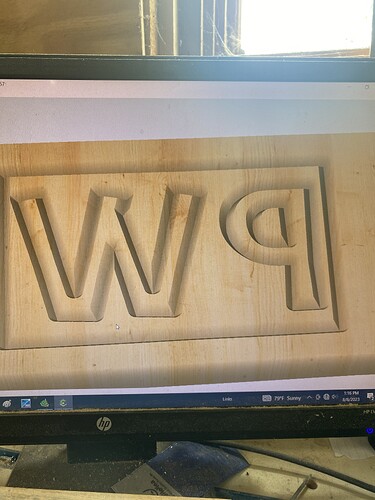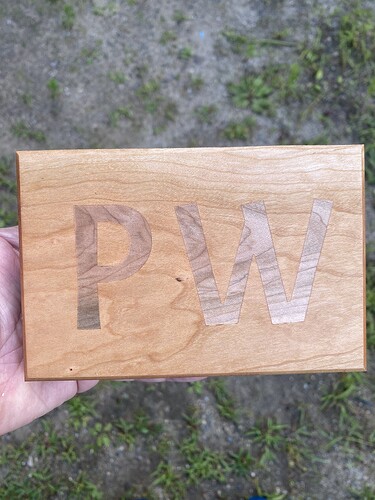Hello, I am about to delve into learning inlay.
I was sent a nice tutorial on how to do this on the forum.
My question is after reading through the tutorial. What is it exactly that advanceV carve. does other than cut the bottom, flat of the v carve?
This was added as a specific feature:
and that thread has multiple sample files, and a complete walkthrough of inlaying a piece of cedar into a poplar board.
I feel like I’m close, but I’m still missing one part. Can anyone tell me why when I’m making the files and I use the inlay mode it doesn’t remove all of the other wood around the inlay piece as shown in the picture below
Sorry, I forgot to enable pocket !!!
What type of glue are you guys using for inlays other than the standard yellow wood glue I was trying to avoid the long wait time.
I used hide glue on mine.
I will go read on that thanks ![]()
I’m wondering if there is a way to control or enlarge the space between the two pieces of wood that create the inlay in the pocket so that I could get a bandsaw or multitool between them to cut them apart?
I also bought a surfacing bit with a quarter inch shank. Any suggestions on depth of cut in hardwood settings for those?
I use the walnut color version of the yellow glue… i seems to hide any gaps a little better ![]()
the space you talk about is set to be the same as the glue hole depth…
I tend to just use a 1/4" bit and the CNC to remove the top… after all we all have this machine that can position a spinning bit lots of precision anywhere in space ![]()
Any hints to your 1” surfacing bit depth and feed speeds?
for that kind of bit… go very very shallow
(F&S are less relevant then)
mostly because with a bit that large the forces on the material underneath are such that you may get tearout if you’re not careful – e.g. fine details will get pulled out
(I tend to use a downcut endmill for this part for that reason)
What thickness piece of wood do you guys use for the inlay side so that when you use the McFly bit so It doesn’t take forever like on a three-quarter inch piece.
I try to match the thickness of the inlay piece to the depth of the inlay — that thickness, plus the gap, plus enough material to hold things together.
I often use 1/4" wood (so 0.25") and then make the depth of the inlay 0.2 so that there is 0.05" left . 0.05" is enough for “structural integrity” … keeping all the pieces in place while it’s thin enough that it’s relatively easy to remove
1/4" is kind of a random number but it is very easy to ebay to get nice premade pieces of wood (often 3.5"x12" or so) for not too much money …
This topic was automatically closed after 30 days. New replies are no longer allowed.

